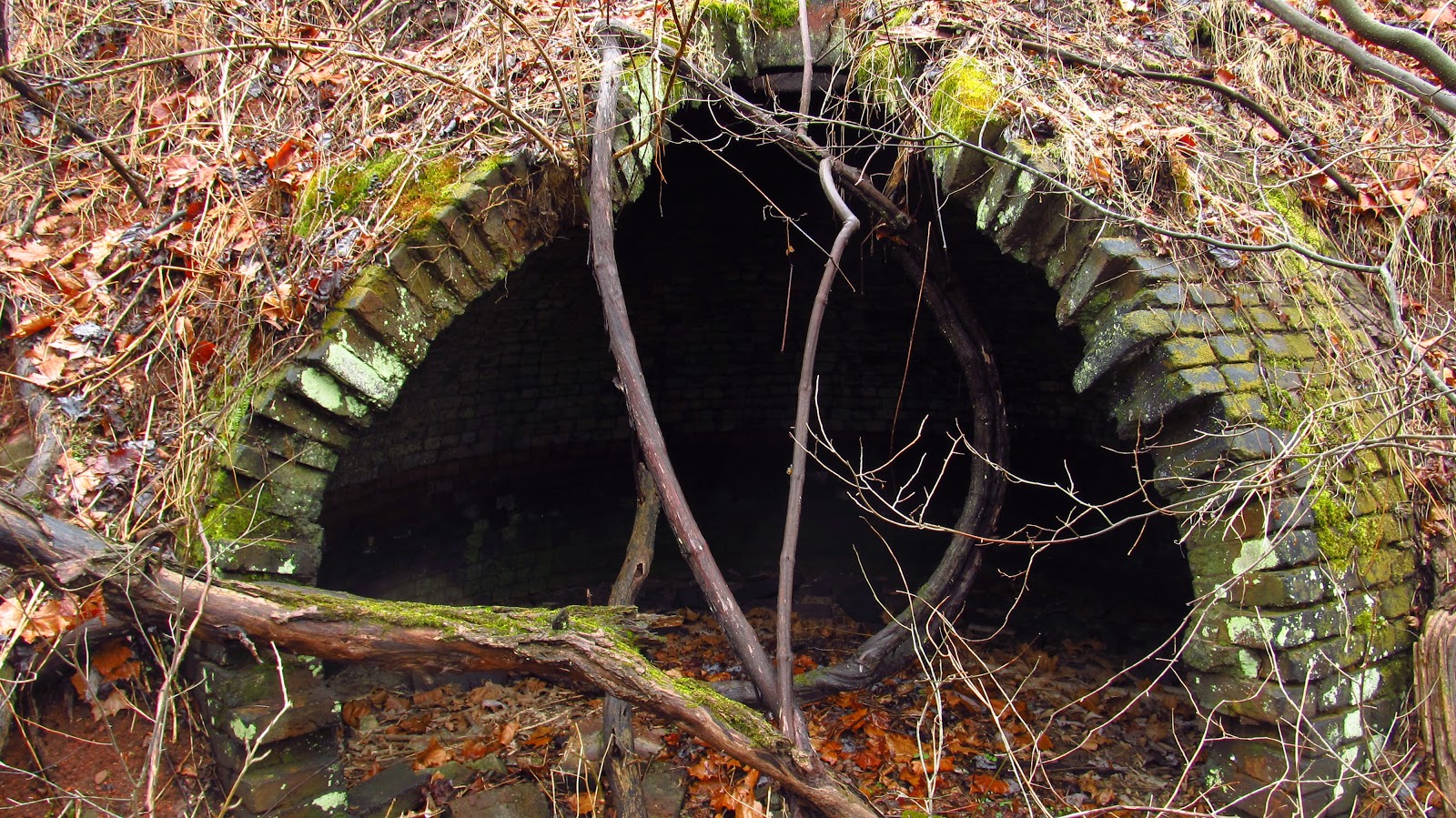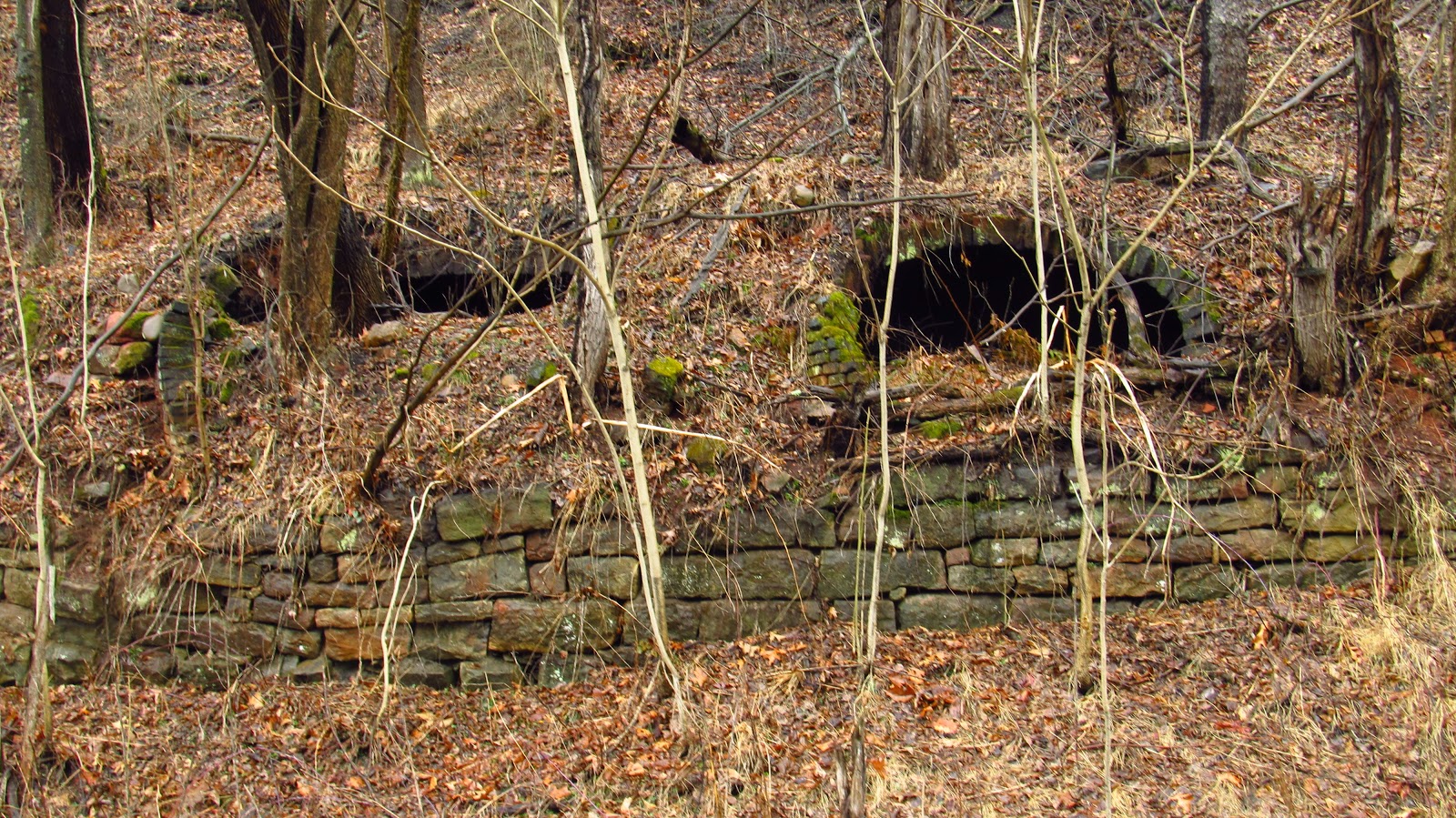Today started off in Mt. Pleasant with a search for the old Buckeye coke ovens. I located the ovens but they were in such bad shape that I really can't even do a post on them. After this dismal failure, I decided to drive 9 miles and see if I could located the Davidson Coke Works. I had it pinpointed on a map but when I got to the area I couldn't find a practical way to get to the area without climbing a steep mountain. But there was one other way. I could walk across the 1931 Pittsburgh and West Virginia Railways bridge that has been abandoned since the 1970's. Oh, by the way, the Davidson coke ovens are gone. That's why this post is about a bridge. I'll throw in the few photos of the Buckeye ovens at the end.
The bridge is actually pretty cool and it's a very, very long bridge. It crosses the Youghiogheny River, the CSX tracks, Mounts Run and drops you off on top of a mountain above Davidson. But it's a fine old bridge. It was brought into service by the Pittsburgh and West Virginia Railway on February 11, 1931. On the 1936 Connellsville Quadrangle USGS Map it shows it connecting to the Western Maryland Railway on the Davidson side and the Pittsburgh and Lake Erie on the Connellsville side. The Pittsburgh and West Virginia Railway came to an end on October 16, 1964. After that it became a Norfolk and Western bridge until it was taken out of service in the 1970's.
 |
| This is my challenge. |
 |
| This is looking back toward the Connellsville side after I discovered there were no Davidson coke ovens. |
 |
| Starting back across. |
 |
| Looking down at the train. |
 |
| At least there's coke here! |
 |
| Walking on. |
 |
| High above the power lines. |
 |
| Those are big piles of cow manure on the ground. |
 |
| Getting closer to the river. |
 |
| Looking down at the river and piers. |
 |
| After this I took some photos of the structure. |
 |
| Almost across the river. |
 |
| One more shot looking down at the water (and my shoe). |
 |
| Almost over land. The Great Allegheny Passage is under the end of the bridge. |
 |
| Ducks! |
 |
| Old Union Switch and Signal box at the end of the bridge. |
 | ||
| One last look back. I doubt I'll ever cross this bridge again. |
Buckeye Coke Ovens
The Buckeye Coke Works date back to 1872 and were constructed by the Cochran and Ewing Company, by 1879 the A.C. Cochran Coal and Coke Company had 160 ovens at Buckeye. By 1900 the H.C. Frick Coke Company owned the plant and operated it until 1917 when it went cold.
Today there are five (at best) remnants of these ovens.
 |
| Hardly even noticeable. |
 |
| What happened?? |
 |
| This is the best one there. |
 |
| The bank is still there but where are the ovens? |
 |
| The slate dump is intact. |







































































